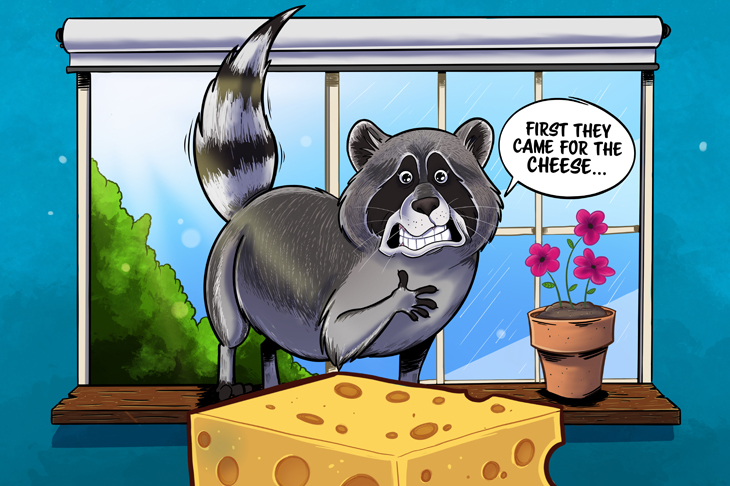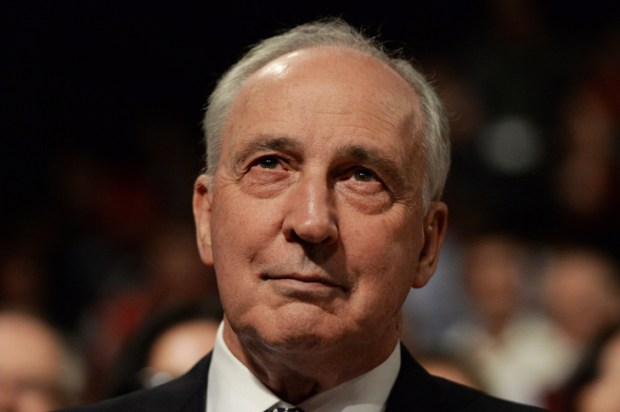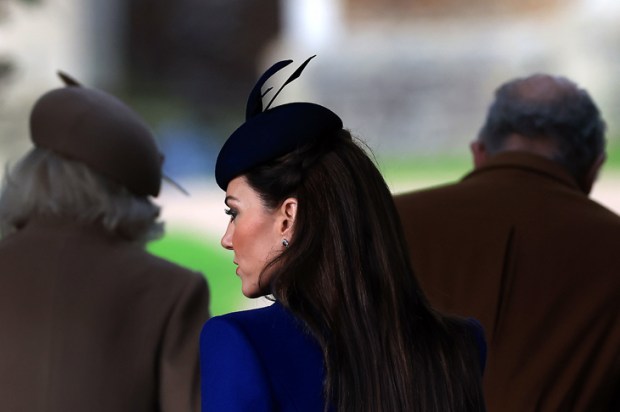Like Cole Sear, the little boy in the supernatural thriller The Sixth Sense who saw dead people that were invisible to everyone else, Dr Stephen Hagan has a sixth sense for racism so imperceptible that even the hypersensitive Australian Human Rights Commission couldn’t detect it. After a 20-year battle, Hagan’s claim that COON cheese is offensive was accepted last week, not under any Australian law but by the Johnny-come-lately Canadian owners of the Warnambool dairy that has been making the cheese since 1935. Perhaps it is only to be expected that Saputo, based in French Canada, would cut and run like camembert, rather than say ‘stiff cheddar’ to Hagan, but the decision is not popular. A petition to change the cheese’s name has garnered only 45 signatures. It’s hardly surprising; for 85 years, Australians have been squinting at cameras and saying ‘COON’ when they were asked to say cheese, mocking the pretentious by calling themselves COONoisseurs and declaring themselves COONtented with their toasties and jaffles.
Not Hagan. In 2001, when the rest of us were cheering on Russell Crowe in Gladiator, or enjoying How the Grinch Stole Christmas, Hagan had eyes only for the COON ad in a break, which so incensed him that he took on his own gladiatorial conquest, filing a complaint with the Advertising Standards Bureau. Unfortunately for Hagan, the bureau couldn’t see what was racist about naming a cheese after its inventor, Edward William Coon, who patented the process of ‘cooning’ cheese to make the perfect Welsh rarebit. But Hagan did not buy the story about its founder. Colour him COON-sceptical but he claimed the cheese was a racist joke, so named because it was wrapped in black wax. In 2008 he declared, ‘If they can prove to me that Edward Coon was a famous cheesemaker, I will drop my campaign.’ His theory was that Coon was just ‘an uneducated recently arrived Russian immigrant who, as a factory hand, swept the floors and did odd jobs around the factory.’ Naming a cheese after this nobody was just a convenient lie, spruiked by crypto-racists to hide their dirty little secret.
As it happens, the inconvenient truth is that Coon was not an immigrant from Mother Russia but the grandson of a farmer from Russia, New York, who only migrated across the state border to Pennsylvania. The son of a cheesemaker, Coon had taken out at least one cheese patent by 1912 and fame and fortune soon followed. In 1923, the Journal and Republican reported the sale by ‘E. W. Coon of Philadelphia, maker and shipper of cheese,’ of five milk plants of the numerous Coon plants and factories in northern New York. In 1926, Coon patented his process for ripening cheese and in 1933, he marketed Red Coon, wrapped in red wax. It was this that was manufactured in Australia when production commenced in 1935; hence the red stripe in the logo.
In the face of such incontrovertible evidence, you might think Hagan would crumble like Caerphilly, but no. Clinging to his COON-spiracy, he told the Guardian, ‘I’d drop my campaign against the name if they can show me the credentials of this fellow (Edward William Coon). They call him a doctor, so why couldn’t they tell me what university he graduated from? Did he have any scientific journal entries?’ And why not dig in, when denialism pays dividends? In an article published on April Fool’s Day 2014, Hagan seriously discussed his long-running ‘love affair’ with s.18C of the Racial Discrimination Act. A ‘personal triumph’ was forcing McDonalds not to run an ad ‘featuring a tall African American basketball player drinking a so-called ‘short black’ coffee on the grounds that it was racist.’
Saputo’s decision will come as a shock to anyone called Coon, which includes Canadian Green politician David Coon and Canadian activist Matthew Coon Come, a grand chief of Quebec’s Grand Council of Crees. Can anything ever be named after them or are they now condemned to the closet; a tribe who dare not speak their name? And what of all those towns celebrated in COON cheese ads; Coonamble, Coonalpyn, Coonooer Bridge, Coongulmerang, Coonawarra, Coonabarabran? Will they have to be purged? Are the Coon butterfly, the Maine Coon cat or the raccoon safe? Hagen has campaigned for the removal of place names that include the N-word but how long until Blacktown, Blackheath, Blackall, Blackbutt, Blackwater, Black Hill, Black Point and Blackwood are cancelled? Whites better watch out too. In 2016, when a Terry White Chemist in Toowoomba displayed nine golliwogs dolls in the window under an invitation to shoppers to ‘Experience a White Christmas,’ Hagan saw red. In Grinch-like tones, he denounced Toowoomba as the ‘most racist city in Australia’ and the golliwogs were banished. Yet Toowoomba was the site of Hagen’s greatest victory. He campaigned for a decade against a sign in the local stadium, erected in the 1960s, to honour Edwin Stanley Brown, a local rugby league player who achieved national acclaim and was affectionately known as ‘N-gger’ because of his fair complexion. Hagan took his battle all the way to the UN, which, unsurprisingly, recommended that Australia ‘take the necessary measures to secure the removal of the offending term from the sign.’ When the ‘E. S. ‘N-gger’ Brown Stand’ was demolished in 2008, so was the slanderous sobriquet.
A new name for COON has not yet been decided. Hagan scoffs at the cost of rebranding saying, ‘it’s just a little piece of cheese. It’s not like I have been asking them to cut their executives’ wages.’ For Australians, what sticks in the craw is being told by a campaigning Blackademic in cahoots with a foreign multinational that their culinary fare is evidence of a moral stain so egregious that it must be excised, like Trotsky from a photo of Stalin. Some have suggested renaming the cheese after cricketer David Boon, who downed 52 tinnies on the Kangaroo Route, although Ian Chappell claims, ‘In my day, 58 beers between London and Sydney would have classified you as a teetotaller.’ By the logic of opposites that reigns in Australian nomenclature — calling redheads Bluey — Boon, who has nothing in common with Coon, other than a syllable, might be appropriate. Saputo says it is ‘working to develop a new brand name that will honour the brand-affinity felt by our valued consumers while aligning with current attitudes and perspectives.’ Good luck with that. As the 1989 advertising jingle warned: It always goes down like a lead balloon / when the family comes home to a house with no COON.
Got something to add? Join the discussion and comment below.
Get 10 issues for just $10
Subscribe to The Spectator Australia today for the next 10 magazine issues, plus full online access, for just $10.
You might disagree with half of it, but you’ll enjoy reading all of it. Try your first month for free, then just $2 a week for the remainder of your first year.














Comments
Don't miss out
Join the conversation with other Spectator Australia readers. Subscribe to leave a comment.
SUBSCRIBEAlready a subscriber? Log in